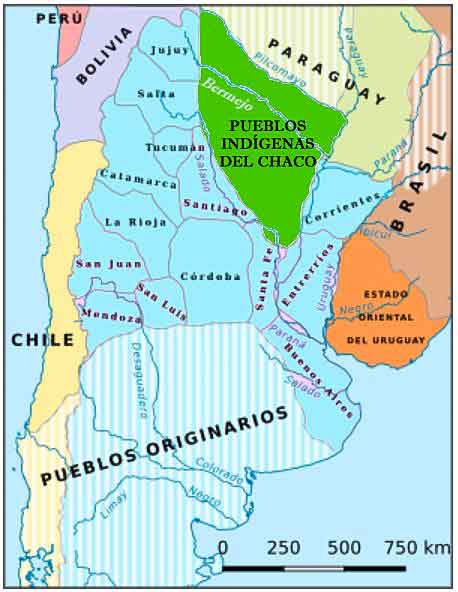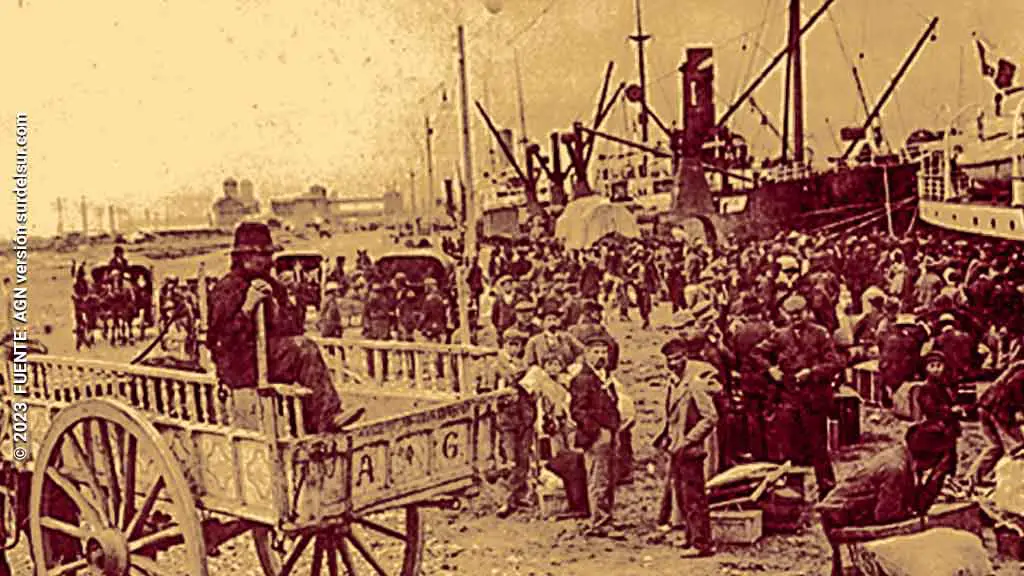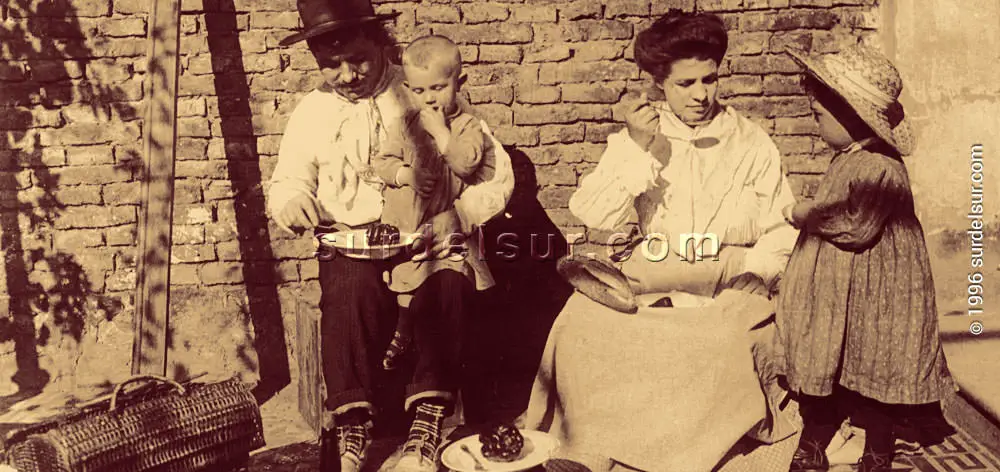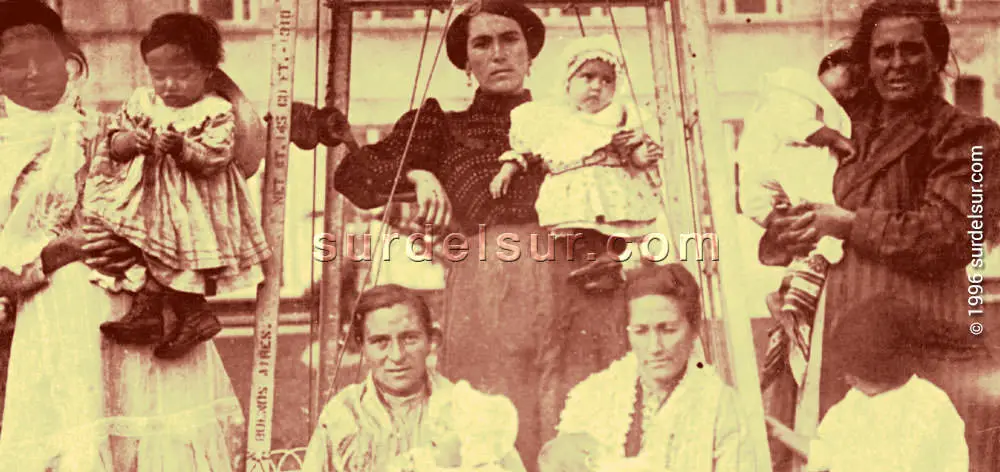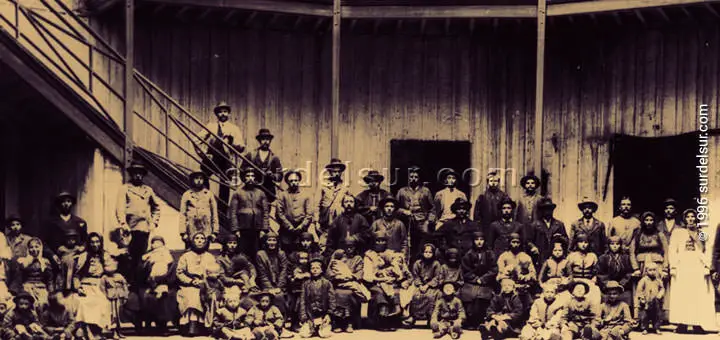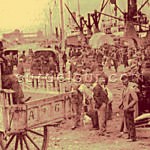Since the middle of the 19th century, immigrants have arrived in Argentina. Around the 19th century, our country was a vast territory with a low demographic density. The need to attract immigration from Europe was a permanent desire.
The History of Immigration to Argentina
Immigrants arrived in Argentina between 1856 and 1950. Thus began the massive process of immigration to Argentina, which would culminate in the twentieth century. Through immigration policy, Argentina went from having a population of 1.1 million inhabitants in 1850 (3.5% of Latin America), to reach 11.8 million inhabitants in 1930 (11.1% of Latin America). This massive immigration made Argentina the second country in terms of immigration in the world.
In this report we tell you the history of immigration to Argentina: What Argentina was like before the waves of immigration. What motivated millions of immigrants to choose Argentina as a place to settle? What were the reasons that drove the exodus of millions of European emigrants since the beginning of the 19th century? Everything below…
CONTENTS
What was Argentina like before the Great Immigration?
Before the big waves of immigration, Argentina was a vast territory with a very low occupancy rate.
The first settlers of our territory would be the descendants of the Asian peoples who entered America through the Bering Strait 30,000 years ago. There are vestiges of their presence in Argentina dating back 8,000 years.
To put this history of immigration to Argentina in context, it is worth remembering that in 1516, in an unsuccessful attempt to find a passage that would connect the Atlantic Ocean with the Pacific, Juan Díaz de Solís had to conclude his trip exploring the coasts of the Río de la Plata, the first Spanish discovery in Argentine territory that marked the course of the Spanish conquest in our land.
The current Argentine territory with its 23 provinces and the Autonomous City of Buenos Aires, was colonized by the Spanish conquering and settler currents that took place between the 16th century and 1810. These promoted the occupation of the north, the east, and the west of Argentina, concentrating the population in 14 provinces. Some of these provinces bordered indigenous territories, as the map shows.
The European inhabitants went from 2,500 in the year 1700 to 6,000 people in 1810, out of a total of 700,000 inhabitants.
In other words, by the time Argentina declared its Independence in 1816, it inherited a large part of the Viceroyalty of the Río de la Plata. This was inhabited to a large extent by the indigenous peoples who occupied the Central and Southern Chaco, the Pampean plain, and all of Patagonia.
Between 1833 and 1834, Juan Manuel de Rosas, at the end of his first governorship, tried to push the limits of the borders with the Indians in his Conquest of the Desert, financed by the province and the Buenos Aires ranchers. Sarmiento began the Conquest of the Chaco in 1870, which ended in 1917. Meanwhile, Roca, with his Campaign to the Desert in 1879, made the border with the indigenous disappear.
Towards the end of the s. XIX and early XX, which is the time of the great wave of immigration, the Argentine Territory was already similar to the current one. An extensive territory with very low population density.
Why did immigrants come to Argentina?
Why did so many immigrants decide to settle in our country? What attraction does Argentina offer in the age of mass immigration?
The great immigration process began at the time that Argentina became a modern state. After the defeat of Rosas in Caseros, Juan Bautista Alberdi, published in May 1852, the “Bases and starting points for the Political Organization of the Argentine Republic”.
Alberdi saw immigration as:
…a means of progress and culture for South America
Source: Bases, ed.Jackson, 1953, p.77
Immigration as a state policy in Argentina
The Constitution of 1853 took as its basis the document published by Alberdi and from its beginning in the preamble it proposes the immigration policy: “and for all the men of the world who want to live on Argentine soil“
Nos los representantes del pueblo de la Nación Argentina, reunidos en Congreso General Constituyente por voluntad y elección de las provincias que la componen, en cumplimiento de pactos preexistentes, con el objeto de constituir la unión nacional, afianzar la justicia, consolidar la paz interior, proveer a la defensa común, promover el bienestar general, y asegurar los beneficios de la libertad, para nosotros, para nuestra posteridad, y para todos los hombres del mundo que quieran habitar en el suelo argentino (and for all the men of the world who want to live on Argentine soil): invocando la protección de Dios, fuente de toda razón y justicia: ordenamos, decretamos y establecemos esta Constitución, para la Nación Argentina.
CONSTITUCION DE LA NACION ARGENTINA
Ley Nº 24.430 PREÁMBULO
The first census in 1869 was ordered by President Domingo F. Sarmiento, and a total of just over 1,800,000 inhabitants was estimated. Political figures such as Sarmiento and Alberdi, Mitre, Avellaneda, and Roca agreed that in order to raise the country after the years of the War for Independence (1810-1826), the War of the Triple Alliance (1864-1870), in addition to civil strife between unitarians and federals, it was necessary to encourage and promote the immigration of Europeans who would contribute their culture and values.
Who were the first immigrants in Argentina
In 1856 the first immigrants arrived in Argentina, coming from Switzerland. The immigrants arrived as a consequence of the Napoleonic Wars which affected the poorer parts of the Swiss Federation. The colony founded on September 8, today remembered as “Farmer’s Day”, was called Esperanza in Santa Fe. Also in 1856, the Swiss Colony or Agricultural Colony of Baradero was founded in the province of Buenos Aires.
Starting in 1857, with intervals of one year, the colonies San José in Entre Ríos arose, then San Jerónimo Norte and San Carlos in Santa Fe. With Esperanza and Baradero they formed the five oldest colonies with which the first stage of Swiss colonization in Argentina. (Source: Chancellery Embassy in Switzerland)
In 1862, 6,716 immigrants had entered the territory; In the year 1870, 41,651 came, and the figure had risen to 70,000 in 1874. The immigrants had been distributed preferentially in the coastal zone, and thus agricultural centers of some importance arose in a very short time.
Colonies of various ethnic groups had settled on the coast: Jews, Swiss, French, Russian, German, Spanish, and Italian. This gave rise to what was called “la pampa gringa“, Pampa Geographical region inhabited by foreigners, especially English speakers and in general a speaker with a non-Spanish language (gringo or gringa according to the RAE)
Why immigrants chose Argentina in 1880
While Europe was industrializing, Argentina was an agro-livestock country that supplied raw materials, agricultural products, and breeding animals to the old continent.
Broadly speaking, two essential factors determined the Great Immigration:
- Argentine immigration policy in 1880
- The reasons that drive the European exodus of 65 million inhabitants.
Both themes will be developed below.
What were the causes of the arrival of immigrants to Argentina?
Argentina received the inhabitants of Europe who were attracted by the promise of work, peace, and well-being; escaping from wars and persecution; in search of better horizons in the new world. Here they stayed, they had children, they mixed their blood and their languages, their cultures and their ambition to belong, contributing to the construction of a collective dream, their new country, Argentina.
Internal causes for immigration
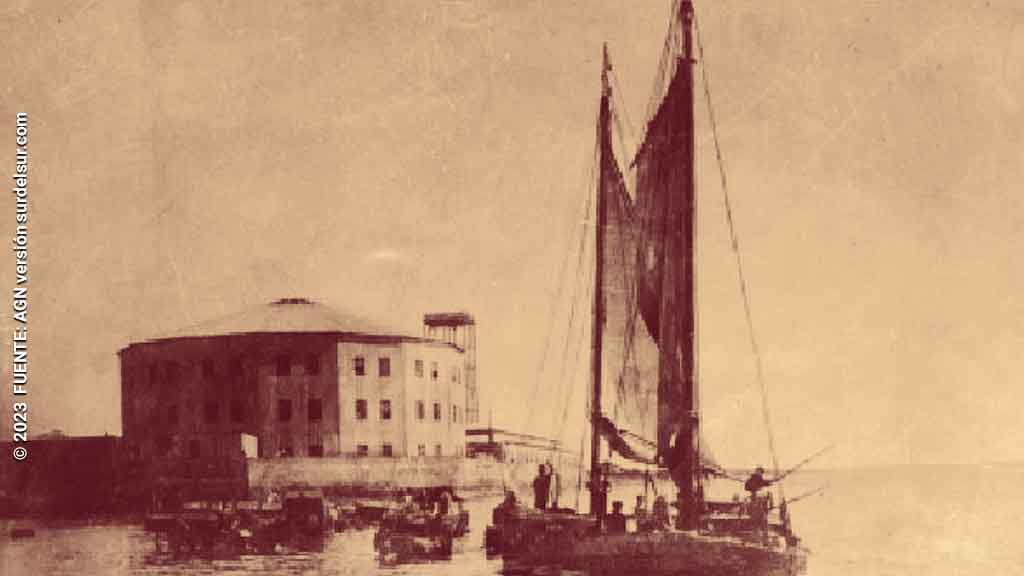
Around 1880, several fundamental events came together in Argentina, which was necessary internal conditions to promote immigration.
- During the presidency of Nicolás Avellaneda (1874-1880), Law No. 817, the National Immigration and Colonization Law of 1876, was enacted on October 19 of that year. We expand on the nature of Law No. 817 further down in this article.
- On April 16, 1879, General Roca began the Desert Campaign. The border with the indigenous that existed until then disappeared and the territories open to colonization were expanded.
- On September 21, 1880, Law 1029 was approved, by which Buenos Aires was declared the federal capital of the Republic, beginning a period of internal peace in Argentina.
During the last decades of the 19th century, the country entered a stage of unprecedented economic expansion, accompanied by a process of political pacification and consolidation of institutions. All this favored the arrival of immigrants and turned Argentina into one of the privileged destinations.
Promotion of Immigration Law No. 817
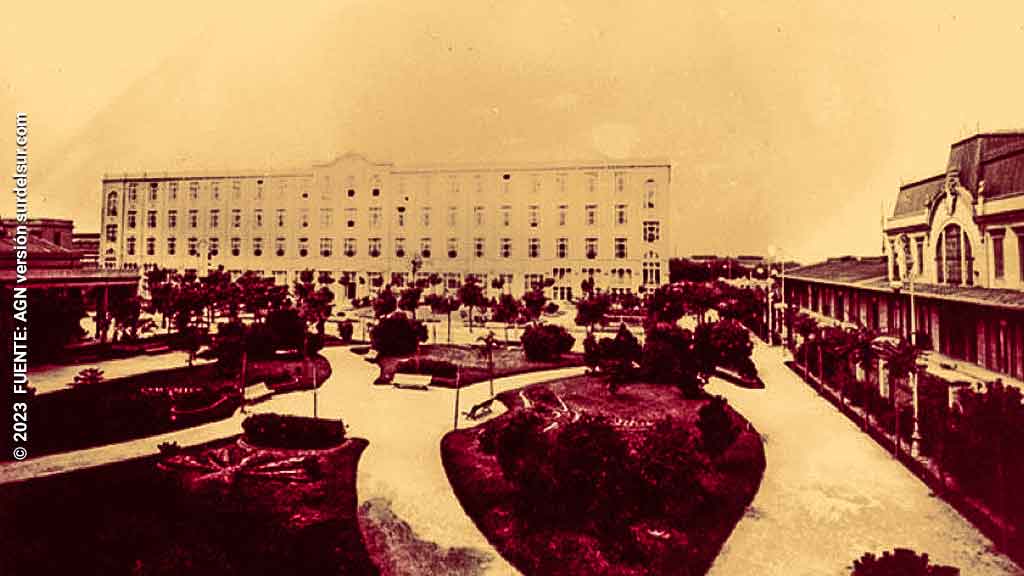
In other words, in 1880 an active policy of attracting European immigrants to Argentina was established. This immigration was encouraged by all means through recruiting agents and propaganda in different countries.
This policy was precisely supported by the Immigration and Colonization Law, No. 817, published in the R.N. 1874/77 and enacted during the Avellaneda government, which was intended to facilitate and promote immigration from European countries.
Among other things, the law establishes that the Argentine government provides room and board to new immigrants for five days after their arrival, in a place near the port of Buenos Aires. In addition, the State covers the costs of transferring migrants to the places where they find work and decide to settle.
Several buildings were used to house immigrants and two hotels were also built: the first hotel, La Rotonda, operated from 1888 to 1910. While the Hotel de Inmigrantes, inaugurated in 1911, maintained its activity until the 1950s. Today the Museum operates there of the Immigration see here
External Causes
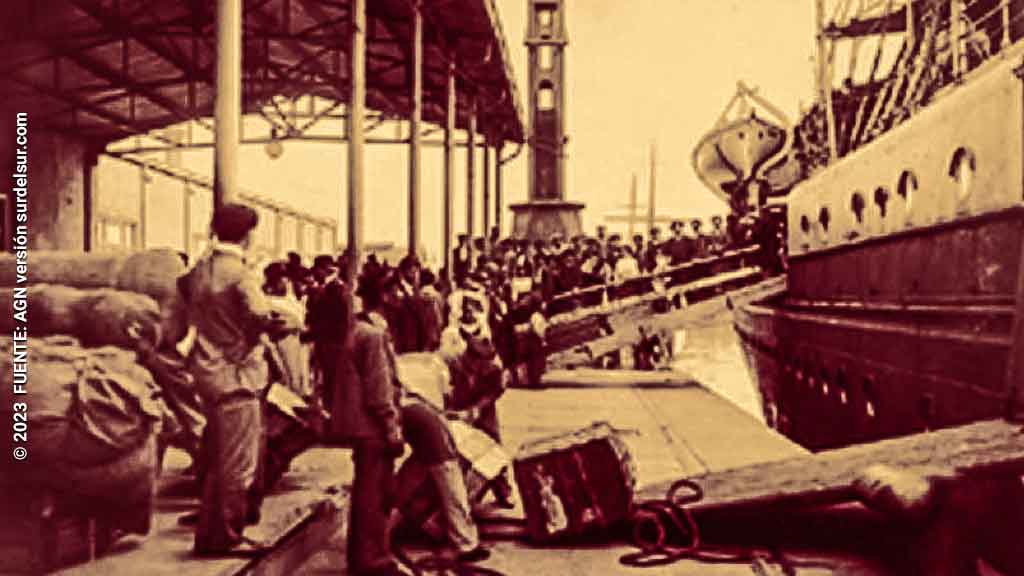
The action to promote immigration by the State, and the political and economic conditions of Argentina, especially from 1880, served as a stimulus for the massive arrival of immigrants. Parallel to this, there were some global conditions of a geopolitical order that favored immigration to Argentina.
- The development of transport and communications helped make transfers faster and more comfortable.
- The modernization of the set of rules and principles by which the Stock Market and Banks are governed made it easier to invest capital in other parts of the world.
- The opening of the markets favored the arrival of products from the New World, mainly cereals, at very competitive prices. This caused losses in the European agricultural sector, which sometimes led to a crisis, prompting the population to emigrate.
Consequences of immigration in Argentina
- The first and most important consequence is the population of the Argentine territory. In the term of 80 years, between 1850 and 1930 the population multiplied by ten. Through immigration policy, Argentina went from having a population of 1.1 million inhabitants in 1850 (3.5% of Latin America), to reach 11.8 million inhabitants in 1930 (11.1% of Latin America). This massive immigration made Argentina the second country in terms of immigration in the world.
- The structure of the Argentine population by age and sex between the middle and the end of the 19th century shows the influence of foreigners, with a clear predominance of men.
- The urbanization process was accentuated by the arrival of immigrants who settled in the urban areas of Buenos Aires, Rosario, Santa Fe, and La Plata, due to the lack of opportunities in rural areas. The urban conglomerates gave rise to a new type of housing: the tenement.
- Immigrants provided labor for industrial and agricultural development.
- They contributed to education, culture, and trade. Fine arts, theater, cinema, and tango music, were influenced as well
- Molded and transformed by the language of the immigrants, lunfardo was born, a form of porteño slang, that occupies a leading role in tango lyrics.
- They mixed their blood and their dreams giving rise to a wonderful melting pot.
The Great European Immigration
Why have millions of inhabitants of various European nations been compelled to leave their countries of origin since the first decades of the 19th century, in a dimension that was unprecedented?
America received between 1830 and 1950 65 million Europeans. Fleeing from war, persecution, and hunger, the inhabitants of different European countries sought the New World, the land of peace and prosperity where their dreams could flourish.
Factors of the European exodus
- The great growth of emigration is associated with the first phases of industrialization, which produced demographic changes and economic modernization.
- While at the beginning of the 19th century, the European population had reached the figure of almost 200 million inhabitants, by 1900 it had doubled. Emigrating was an escape valve from hunger and lack of work
- There were forced migrations that began in the mid-19th century. The Napoleonic wars, the invasion of the Russian Empire into European countries with Jewish populations, which led to pogroms from 1859, then the dissolution of the Austro-Hungarian Empire after the First World War (1914-1918), and the Russian Revolution (1917), induced millions of people to emigrate escaping due to hunger, political, ethnic or religious reasons.
- It then continued with the rise of fascism and xenophobic nationalism. The Great Depression from 1929, the Spanish Civil War (1936-1939), and Hitler’s rise to power preceded the Second World War (1939-1945). All of this led to the persecution, uprooting, and migration of large masses of Europeans. 11 million people from different ethnic, political, and religious minorities died. The final solution applied by Hitler killed 6 million Jews in what is known as the Holocaust. Argentina is the main Jewish community in Latin America and the seventh in the world in importance.
Immigration waves of the s. XIX to America
Why was their main destination America?
From the middle of the 19th century to the beginning of the 20th century, all the countries of the Americas received strong immigration flows. The beginnings of industrialization in North America, a practically uninhabited continent, offered multiple investment and job opportunities for the inhabitants of northern Europe. When at the end of the century South America was integrated into the international trade system, specializing in the export of agricultural products, the job offer expanded and attracted the population of southern Europe,
- In the first wave, Europeans from the most industrialized countries of central and northern Europe: the United Kingdom, Germany, Ireland, Sweden, and Norway, emigrated to the United States and Canada.
- In the last third of the 19th century, Europeans emigrated from the countries with later industrialization, which correspond to southern and eastern Europe, especially from Italy, Spain, Portugal, Poland, and the Russian Empire. The latter included countries that opened up after immigration in central and southern America: mainly Argentina and Brazil.
You may also be interested in how immigration flows influenced the history of economic activities in Argentina >>
Where do most immigrants in Argentina come from at the end of the 19th century?
Thus began the massive process of immigrants to Argentina, which would culminate in the middle of the 20th century. Since the middle of the 19th century, the means of transport to the ports has been the railway, and sailing ships have been replaced by steamships. The extraordinary boost that transoceanic navigation received throughout the second half of the 19th century and up to the First World War was the fundamental advance that supported the great European emigration.
In 1869, during the Sarmiento Presidency, the first population census was carried out, which gave a total of 1,877,490 inhabitants. Twenty-six years later, in 1895, the population had doubled. Under the Presidency of Evaristo Uriburu, the second census was carried out. The result of the 1895 census indicates that Argentina has 4,094,911 inhabitants. By then Argentina had received a large contribution from Europeans. Of the total number of foreigners, Italians, and Spaniards, made up 70%. Corresponding to approximately 30% Spanish and 40% to Italians.
According to data from the DNM (Source: National Directorate of Migrations), between 1857 and 1940, Argentina received almost 3 million Italians and just over 2 million Spaniards, completing a total of 6,611,000 with immigrants of other nationalities, converting Argentina into the second country by the flow of immigration worldwide.
Information on immigrants who entered through the port of Buenos Aires from 1800 to 1960 can be accessed in the CEMLA database.
Immigration movements of the 20th century
At the beginning of this century, three out of every ten inhabitants were foreigners. According to the third census, the 1914 Census, a total of 7,903,662 inhabitants are counted. Foreigners add up to 2,357,952 people. In 1914, 29.9% of the population was foreign, that is, almost a third of the population.
When the immigration movements ended in 1970, only 10% of the inhabitants were born outside the country. In 1980 it had dropped to 7% and by 1991 the amount had dropped to 5%. The trend of the foreign population remained to decrease until 2001.
Where do immigrants to Argentina come from in the 21st century?
At the beginning of the 20th century, immigrants represented 30% of the population. Today they are less than 5%.
The 2010 Census records a slight growth, from 4.2% to 4.5%, of immigration to Argentina in relation to the 2001 census.
According to the 2010 Census, immigrants to Argentina come mainly from: Paraguay, Bolivia, Chile and Peru; and make up 68.9% of the total of those born abroad.
Of the total immigrants to Argentina, 41.1% are located in Greater Buenos Aires and 21% in the Autonomous City of Buenos Aires, where foreigners represent 13.2% of the total population of CABA.
To know more details about the Argentine population, we suggest seeing Argentina Population: The present of Argentines
Internal migrations in Argentina
There are movements of internal population displacements, considered seasonal migrations, due to the regional characteristics of certain jobs such as the sugar harvest in the northwest, which continues to attract workers from all latitudes around the months of July-October. The same happens with the grape harvest in Cuyo at the end of summer.
There are also permanent migrations, caused by socioeconomic changes. With the end of the agro-export model, massive migration to the cities occurred during the rural exodus, coinciding from 1940 with the migratory process that accompanied the industrialization of Buenos Aires, Rosario, and Córdoba.
According to the last Census, the population that emigrated and lives outside its province of origin would reach 20%. Internal migrations produced some perhaps unforeseen phenomena. The cities of the interior lost young population and boosted their economic decline. And those cities that received the migratory flows had to face the lack of infrastructure to cope with the process and still cannot avoid the social conflict that overcrowding causes.
See in the following report, the effect of migratory movements in the City of Buenos Aires >>

